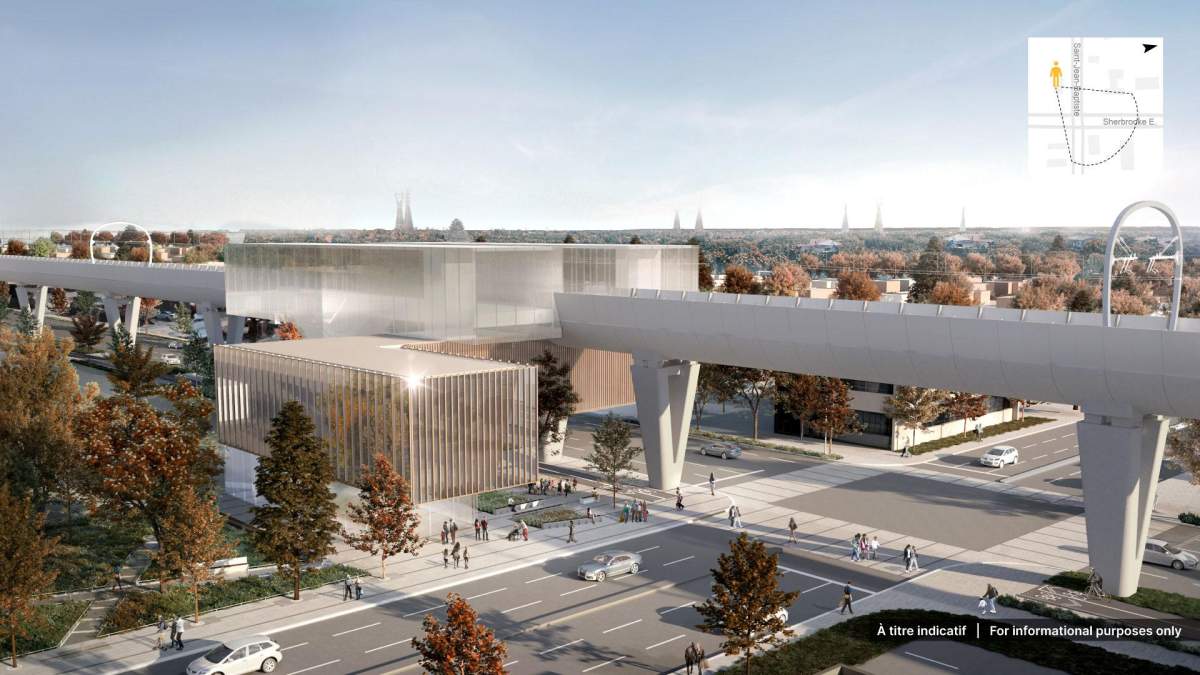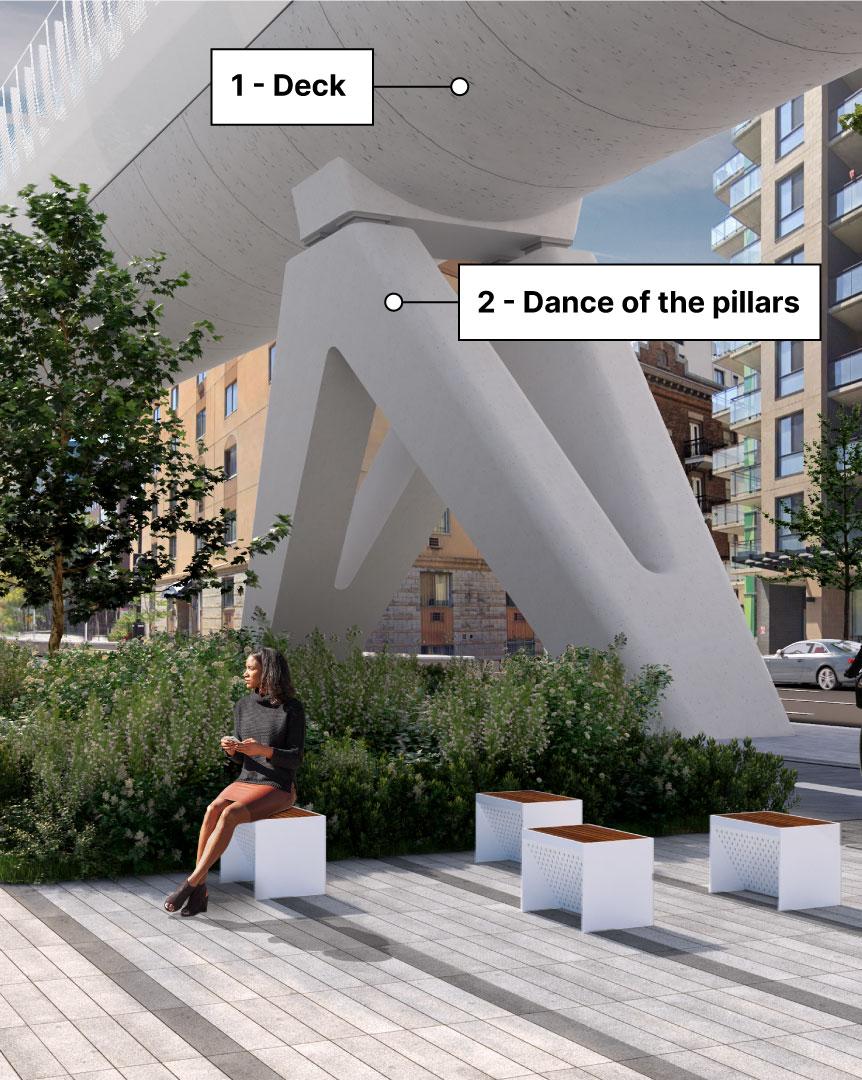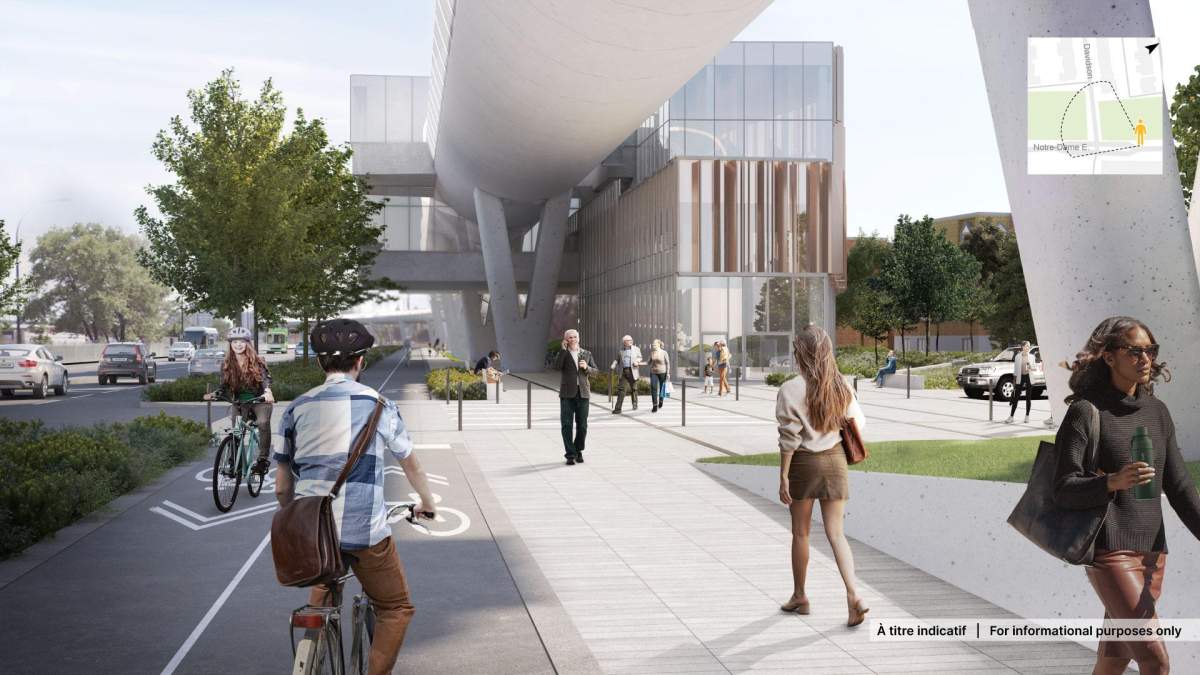Back from the drawing board, developers behind the proposed REM de L’Est project unveiled a revamped look for the proposed $10-billion light rail system.

After receiving criticism and concern, CDPQ Infra, the infrastructure project wing of Quebec’s public pension fund, has unveiled plans for what it calls a future landmark for Montreal.
“We think we came up with a very interesting project, architecturally wise, aesthetically wise. We think it’s a future landmark for the city,” said Christian Ducharme, spokesperson with CDPQ Infra, a subsidiary of Caisse de dépôt et placement du Québec.
The new proposal comes after an independent report by an expert advisory committee raised a number of concerns. The committee’s job is to ensure the rapid transit project is well integrated with the city.
According to CDPQ Infra, 80 per cent of the issues flagged by the committee have been resolved.
READ MORE: Demonstrators concerned over the REM’s proposed eastern link
Estimated at $10 billion, the second phase of the Réseau Express Métropolitain (REM) would span 32 kilometres, connecting Pointe-aux Trembles with Montreal’s downtown core, using aerial and underground tunnels.
The network, divided in two branches, will link the on-island suburb of Montréal-Est with the Montreal boroughs of Rivière-des-Prairies, Pointe-aux-Trembles, Montreal North, Saint-Leonard, Rosemont-La Petite-Patrie, Mercier-Hochelaga-Maisoneuve, and Ville-Marie in the city centre.
The new rail system would be entirely made out of white stylized concrete pillars instead of steel.

Get breaking National news
See-through sound walls will be placed in heavily populated areas to reduce noise and, according to CDPQ Infra, please the eye.
“The concrete is more streamlined and lighter than a steel structure would be. If we would have installed a steel structure along 24 kilometres it would’ve taken too long,” Ducharme said.
The structure, which would run along major arteries such as René Levesque Boulevard and Norte-Dame Street, would be slightly shorter in height. The new plan calls for the pillars to be 9 m tall, instead of 11 m like much of the REM on the West Island.
The new plan also introduces the idea of having three promenade areas underneath the structure as well as lookouts.
Creating some 16 km of pedestrian space, it would reduce street lanes on Sherbrooke Street East, Notre-Dame Street East and René-Lévesque Boulevard.
“We’re giving back a lot of space to the public,” Ducharme said.
“On Rene-Levesque, were giving back the equivalent of four lanes to pedestrians and cyclists. Everyone will be able to completely enjoy this new space. We will be installing a brand new transportation system. It will make the downtown core more attractive than today,” Ducharme said.
READ MORE: REM de l’Est officials propose tunnel for downtown section of light rail network
The financing for the multibillion dollar project is still unclear.
Premier François Legault has in the past said that the Quebec government is willing to inject a significant sum into the project.
CDPQ Infra says the city of Montreal would be responsible for paying for much of the pedestrian and urban integration of the project.
City representatives have said that while they recognize much has been taken into consideration when it comes to the recommendations, much still needs to be done.
During the 2021 election campaign, Mayor Valerie Plante pledged $500 million would go toward the REM project if it went ahead.
Despite this, CDPQ Infra says its timeline has not changed. It hopes to begin construction in 2023 and finish by 2029.
“We are very proud of what we have submitted. For now, we just want to make sure every stakeholder is fully aligned with us so we can move on,” Ducharme said.










Comments